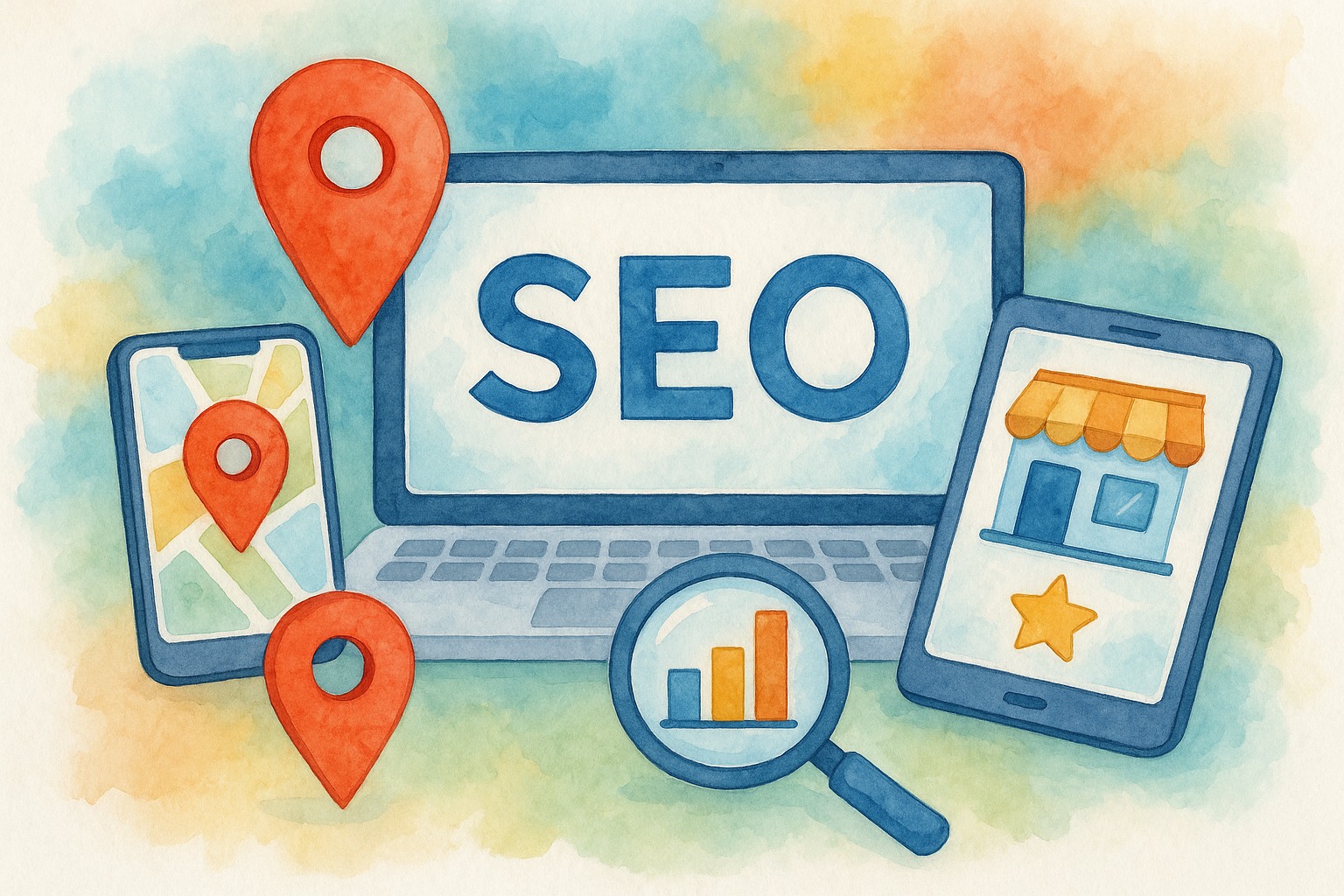If you’re running a small business in 2025, getting noticed by people in your neighborhood is more important than ever. Local SEO isn’t just a buzzword—it’s an absolute must for anyone who wants to show up when potential customers search for services or products in their area. Let’s break down exactly how you can start improving your local SEO step by step, so your business pops up exactly where it should: right in front of your next customer.
How to Improve Local SEO for Small Businesses in 2025: Step-by-Step Guide
Understanding the Importance of Local SEO
Local SEO is all about optimizing your online presence to attract more business from relevant local searches. Why should you care about this? Because it’s where your customers are already looking for you. 46% of all Google searches have local intent. That means nearly half of the people typing something into Google are hoping to find a nearby business or service.
What’s even more compelling is what happens after those searches. According to recent statistics, 78% of local mobile searches lead to offline purchases. This isn’t just about getting clicks—it’s about getting real people through your door or calling your business.
Local SEO isn’t just a side project for tech-savvy businesses anymore. It’s a critical tool for competing in the modern marketplace. If you want your small business to show up when someone in your town searches for your services, investing in local SEO is the way forward.
Optimizing Your Google Business Profile
Your Google Business Profile (previously Google My Business) is basically your digital storefront. It’s often the first impression someone will have of your business, so you want to make it count. The numbers speak for themselves: Businesses with complete Google Business Profiles are 70% more likely to attract location visits. That’s a huge bump in foot traffic just from filling out your profile completely!
Here’s how you can get the most out of your Google Business Profile:
- Claim and verify your listing: Make sure you’re the one in control of your business profile. Google will walk you through the verification process, usually by mail or phone.
- Fill out every section: Include your business name, address, phone number, website, hours of operation, and detailed business description. Don’t forget to choose the right business categories and add relevant services or products.
- Add high-quality photos: Photos of your storefront, interior, team, and products help customers get a feel for your business before they visit.
- Keep your information up to date: If you change your hours for a holiday or move locations, update your profile immediately. Outdated info can lead to lost sales and frustrated customers.
- Make use of Google Posts: Share updates, promotions, or events directly on your profile. This keeps your listing fresh and engaging.
Don’t forget the importance of mobile optimization: 61% of mobile searchers are more likely to contact a local business if they have a mobile-friendly site. That means your website should look great and load quickly on smartphones, since many customers will click through from your Google Business Profile.
Another major reason to optimize your profile is the Google Map Pack—the set of listings that show up at the top of local search results. 42% of local searches involve clicks on the Google Map Pack. If your profile is complete and active, you have a much better shot at landing one of these coveted spots.
Building Local Citations and Consistent NAP Information
Citations are mentions of your business name, address, and phone number (NAP) on other websites, like directories, review platforms, or local business associations. These references help Google confirm your business info and boost your credibility in local search results.
Here’s how you can build strong local citations:
- Start with the basics: Make sure your NAP is exactly the same everywhere it appears online—right down to abbreviations or suite numbers. Consistency builds trust with search engines.
- List your business in key directories: Focus on big platforms like Yelp, Facebook, Apple Maps, and industry-specific directories relevant to your business.
- Seek out local opportunities: Join your chamber of commerce, sponsor community events, or get listed on local news sites.
- Regularly audit your citations: Check for outdated or duplicate listings that could confuse search engines or customers. Clean up any inconsistencies as soon as you find them.
Why is this important? 72% of consumers use Google to search for local business information. If your details aren’t accurate or are missing from key places, you could be invisible to a big chunk of your potential audience. For a deeper dive on managing your local citations, the team at https://brenham.buzz has a ton of resources tailored for small town businesses.
Encouraging and Managing Customer Reviews
Online reviews are the new word-of-mouth, and they carry a ton of weight in convincing new customers to try your business. In fact, 88% of consumers trust online reviews as much as personal recommendations. That means what people are saying about you online can make—or break—your reputation.
Here are some steps to gather and manage reviews effectively:
- Ask for reviews: After a successful transaction, don’t be shy—politely ask your customers to leave a review. You can do this in person, by email, or through SMS follow-ups.
- Make it easy: Provide direct links to your Google Business Profile or other review platforms. The less effort it takes, the more likely people are to leave feedback.
- Respond to all reviews: Thank customers for positive feedback and address any concerns raised in negative reviews. This shows you care about customer experience and can actually turn a negative into a positive if handled well.
- Monitor your reputation: Set up alerts or regularly check review sites so you don’t miss new feedback. Quick responses matter.
Consistent positive reviews improve your rankings in local search and help new customers feel confident choosing your business. Just remember—never buy fake reviews or offer incentives that violate platform guidelines. Authentic feedback is always best.
Creating Localized Content and Utilizing Social Media
Once your business info is solid and reviews are rolling in, it’s time to think about content. Localized content helps you connect with your community and show up in more relevant searches. Blog posts, event announcements, case studies featuring local clients, and news about your involvement in the area all help Google (and your neighbors) see that you’re genuinely part of the local scene.
Here’s how to make your content work for local SEO:
- Write about local events: Cover festivals, markets, or community gatherings your business attends or sponsors.
- Highlight local partnerships: Collaborate with other local businesses and share those stories on your website or social channels.
- Use location-based keywords: Incorporate your city, neighborhood, or region into your content naturally. Don’t just stuff keywords—focus on relevance.
- Showcase customer stories: Share testimonials or case studies from happy local clients.
Social media is another powerful tool for local businesses. Platforms like Facebook, Instagram, and even TikTok let you engage directly with people in your area. Share real-time updates, behind-the-scenes content, and local shout-outs to build stronger community ties.
Don’t forget to encourage check-ins and user-generated content—when customers tag your business or share their experiences, it amplifies your reach organically. And of course, always keep your contact info and location details up to date across every platform.
By combining strategic localized content with an active social presence, you’re not just boosting your search rankings—you’re building a loyal local following that can power your business for years to come.
Ready to take your local SEO to the next level? Remember, these steps aren’t a one-time fix—they’re ongoing strategies you’ll want to revisit and refine as your business and community evolve. For more tips and hands-on guidance, don’t forget to check out the expert resources at https://brenham.buzz.


Leave a Reply